22.Juli, 2019
I use the F90x for 2 Years now and put approx 30 Rolls of Film through it. These were mainly Black and White Film but i did some Colour Negative Film too. It exposed the film always perfect and is very easy to operate. Really a good workhorse camera.
There are drawbacks to this camera. They are irrelevant for me, but perhaps you care for them: The F90/90x does not support G-lenses and VR technology.
A lot of them (probably all) have got sticky backs. You have to clean them when you buy them.
There is a possibility to use G-lenses on the F90x in Aperture Priority Mode, but this unfortuantley doesnt work on F90/N90 cameras.
I made a little Youtubevideo about that fact. It is a workaround though.
Here is the link: Youtubevideo F90/F90x with G-lenses
I made a few other videos about this camera you might want to see.
Advantages: The F90(x) has metal Backdoor Hinge, the F90(x) has the metal rewind spool. It uses the very common and cheap AA batteries, it has a very good batterylife, i shot more than 30 rolls of film over two years with this camera and i am still on the first set of batteries and the camera tells me they are still completely full. The F90(x) has the Eyepiece shutter and a stainless steel lensmount. It has an inner steel frame and it is overall despite it outer plastc shell a very stiff and solid camera. It really is a no nonsene device.
I enjoy using it, because it has only the things i need and nothing more. I dont get distracted. The F90/F90x is my main film camera right now. I bought it, because i wanted to invest my money and time in one system instead of severals. Since i used at that time my Nikon D200 for digital pictures and wanted to upgrade to FullFrame at some time i chose to build up an analog Nikon System. Until that time i used most of the time my lovely Zorki 6 camera. But unfortunatley the shutter curtain failed. Than i got another Zorki 6 and again the shutter curtain broke. I lost a lot of pictures this way unfortunatley. So i didnt want a camera with an unreliable shutter any more. I decided to leave that kind of photographic tool behind and settle for something more modern. I wanted a film camera, that would have a state of the art exposuremeter and a reliable shutter for correct exposures. So i could really focus on my actual photographic skills instead of becoming a camera repairman. And i wanted the camera to be yet cheap and expendable.The best camera for this task was the F90/F90x. The F100 was unreasonable expensive on the used market for what it is in comparision to the F90/F90x and i read that a lot of the F100 have problems with their backdoors, i didnt want to have another repair job camera, i wanted to take pictures. And the F6 and F5 were to big and even more expensive. The F80 doesnt work properly with the old Ai(s) lenses, so it was off the table too. There were other older cameras like the F801/F801s but they were the same price as the F90/F90x on the used market and a little inferior.So i searched for a nice F90x and found one for about 30 €. It seems that this camera was never used before i bought it. Today they are becoming more expensive again.
Since then i use this camera and never looked back.
The F90x compared to the F4: At one point i bought a F4 alongside with two lenses for little money. I used the F4 for several rolls of film, but i never liked it. It is way to bulky for what it is. I dont know if i will use it again. The F90x is such a better tool for me.
the F90(x) sports a stainless steel mount
addidtional content:
Hello, in this text I would like to share my
thoughts about the F90x camera in a kind of impressions review.
This camera is known in North America as N90s
I want to focus on the practical performance of
this camera in general handling and everyday use compared to more recent SLR
designs.
This text will not go into the details of the
function or technical specifications unless they are necessary to make a point.
General technical properties and functions of
this camera can be found in the descriptions.
On some occasions a comparision with the more recent digital SLR D700 will be made, to put the properties of the F90x in perspective with an example of a more recent Nikon DSLR Layout. But it is of course not meant as a comparison video of any kind between this two cameras.
actually this text was a draft for the creation of the video!
The exterior:
The camera construction of the F90x consists of
a metal frame covered by a plastic outer shell.
The construction feels very solid in general. There
is no flex or movement of the body parts noticeable at all.
Since there is hardly any metal on the outside,
the camera never feels very cold and can be operated in very cold weather
without gloves.
All really important parts of this camera are well
constructed and made from stainless steel.
This includes:The lens mount, the hot shoe, the
neckstrab eyelets, the tripod screw mount, the batterie compartment screw and
inner screw thread, the rewind fork, the backdoor hinges and the parts of the backdoor
locking mechanism on both sides.
The weight, shape and size is just right for an
enthusiast style camera. it feels good and secure in the hand.
The rubber parts on the grip of the F90x are
made from another material then the one on the D700. This older material is a
little less grippy and less spongy. It feels harder and stiffer with somewhat
less grip. This grip materials however don’t peel off over time like most grips
on the D700.
On the back of the camera there has been
applied a rubberish material. This material degraded on most units by now and
got sticky.
It was removed on this unit and replaced by a
piece of leather.
For removing, the rubber material on the back about
an hour of work has to be calculated.
The backdoor is easily detachable, which makes
this task a lot easier. The backdoor is in general robust and trustworthy Like
the rest of the camera.
The buttons on the shoulders of this camera are
mostly in alignment with the surface, the controls which protrude al little bit
beyond the surface still have a very rounded flat low profile shape.
The same is true with the hot shoe, which is
completely sunken into the prism roof.
This approach of flat surfaces adds to the
robustness of this camera. Because obviously survivability means not only
withstanding force but also not offering an attack surface in the first place.
The plastic outer shell do not seem
confidence-inspiring at the very first look but in general, operating the F90x soon
leaves the impressions of an overall dependable and very robust constructed
camera.
The F90x was produced between 1994 and 2001.
The units are today as of 2019 between 25 and 18 years old by now.
The electronic components in these cameras will
work flawlessly today as well for many years to come.
Controls:
The control philosophy of this camera looks a
bit unusual at first sight, but is very close to modern DSLRs like the D700.
The On/Off switch on this camera is a sliding
design instead of the rotating design around the shutter release of modern
Nikon DSLRs. It works fine too and is a little less prone to accidently
activation. But this is of course matter of taste.
The shutter release has a very precise travel,
not too long, not too short. It is very similar to the one In the D700.
The command dial is big and easy to access. The
haptic feedback of the detents is less refined than in the D700 dials, but still
absolute useable and nothing to worry about.
Interfaces:
The camera has two displays. One on the top of
the camera, one in the viewfinder.
The display on the top of the camera is small
in comparison to more modern SLR designs.
It is contrasty and very good readable. It has
a built-in effective backside illumination which works actually better than in
the D700.
It shows most information that are expected
from a modern day DSLR user. But because it is not very big it doesn’t show
everything. For example, it shows if exposure compensation is engaged, by
flashing this symbol, but it doesn’t show how much compensation is dialed in.
In order to see it, the expsore compensation button has to be pressed down. The
display of the D700 would show this.
The display in the viewfinder is illuminated by
an electric light source in the prism roof as well through a translucent piece
of plastic in the prism roof by ambient light.
That means no matter how bright the subject in
the viewfinder may be, the display will be good readable, since the surrounding
light will also light up the display from behind.
The viewfinder:
The viewfinder is nice and bright and for sure good
enough for every kind of photography.
The viewfinder covers 92% of the frame. For
film photography that is just right, since there may be a cut off in print
processing.
The focusing screen is exchangeable.
The standard focusing screen which you can see
here is called Type B. This screen is optimized for AF operation. It can be
used to manual focus too of course, but it doesn’t have a split screen. It
shows a big circle indicating the area of center weighted metering, a smaller
circle showing the area of spot metering and two brackets which indicate the
borders of the wide AF metering field. The center AF metering field is not
shown. It is smaller than the small circle.
There is only one other screen available for
this camera called Type E which just ads “rule of third style”grid lines. This screen
too is optimized for AF operation.
There is no focusing screen available optimized
for manual focusing with a split screen. But manual focusing is assisted by the
autofocus system, so it isn’t really necessary actually.
The F90x has a built-in eyepiece shutter. This
is usable while taking exposures with some kind of autometer mode engaged while
the eye of the photographer is not on the viewfinder. For example, metering
with the camera on a tripod while standing next to it, taking pictures from the
hip, or over the heads of a crowd or taking pictures with selftimer. In this
case light entering through the viewfinder could distort the metering of the
camera through the lens.
Autofocus operation:
The f90x has one cross type AF point which is
quite a good one. If you are the focus and recompose type you will be happy.
The autofocus with AF lenses is quite loud and
sounds a little like a coffee grinder. The autofocus works with all AF and G
lenses.
The focus speed on the D700 and the F90x are
more or less indistinguishable fast.
Even in dim light with low contrast targets it
is hard to reproduce a situation, where D700 would find a focus and the F90x would
not.
The F90x has three Af points There are two Af
areas to the left and right of the center point but they are not cross type. It
is possible to deactivate them which I usually do.
There is no button for backside focus like on
the D700. But there is a af lock button in the front. But that’s not as
convenient as the backbutton operation.
While manual focusing on the F90x you can use a
focus indicator in the viewfinder, which will tell you if you are in focus.
The
shutter:
The shutter speeds can be adjusted in 1/3 stop
increments with the F90x camera.
The shutter offers a shortest exposuretime of
1/8000 of a second and a longest of 30 seconds, the flash sync speed is 1/250
of a second. During the auto modes like A or P, the display will show an
exposure time, but the camera will expose at the mathematical correct time for
the lightsituation, not necessarily at one of the displayed exposuretimes, but
times in between too.
I could not find a credible source of
information according to the shutterlife of the F90x. Some sources suggested
50.000 others 100.000 cycles as the tested shutterlife.
If we assume the more conservative lower number
of 50.000 cycles. That doesn’t sound like much at first but lets make a quick
calculation.
50.000 cycles resemble approximately 1400 rolls
of film with 36 exposures.
I bought this camera 3 years ago almost unused
and exposed about 40 rolls of film with it. That are 1.440 shutter actuations
in total and 13,3 rolls per year. To reach a number of 50000 cycles at this
rate it would take me over 100 years.
If you would shoot on average 1 roll of film
per week, it would take you still almost 30 years to consume that cycles.
So 50000 cycle do not sound like much, but for
a analog enthusiast camera that really is enough.
But anyway, reading online about this camera
leaves the impressions, that this camera can do much more than 50000 cycles.
Mirror
slap
The Mirror slap is a topic of importance for me,
because I tend to do a lot of close up work with ambient light or light bulbs
instead of flashes.
SLR Cameras without mirror lockup tend to show
a certain degree of vibration blur between 1/30 and 1 second exposures due to
mirror slap. This is most prominent when using long lenses.
I wanted to use my F90x for my close up photography,
but I was concerned about the effect of mirror slap, because the F90 x doesn’t
have a mirror lock up and I usually expose at times which are exactly in this
critical area.
To determine the effect of mirror slap on this
camera, i made a series of pictures with a 135mm macro setup. The focusing
distance was at around one meter. the aperture stayed at 1:5,6 and the lens and
the target weren’t touched throughout the test.
I used 20 second delay time release and made
sure there are absolute no vibrations until the exposure was made. I took every
shot two times. The light difference was made by an artificial light source,
which was moved away from the target accordingly to create the same exposure on
every shot. The shutter speed ranged from 1/60 to ¼ in full stop increments. I
used Agfa APX 100 film in this test, I exposed it for ISO 80, and developed it
in Rodinal in a 1+100 dilution over 10 minutes with moderate agitation.
The results can be seen here. The visible crop
of this picture covers a surface of approximately 3 by 3 mm on the negative. 3
mm are 0.118 inch.
1/60 of a second,
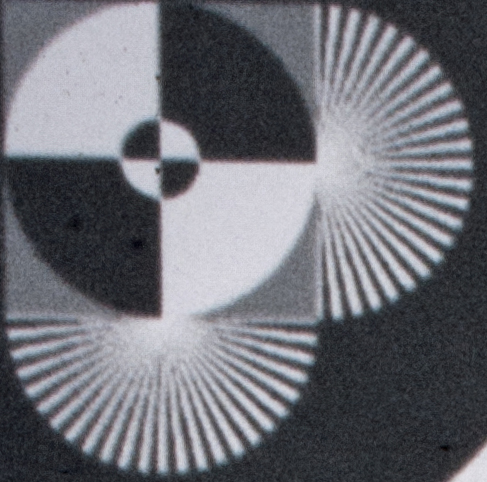
Again 1/60 of a second,
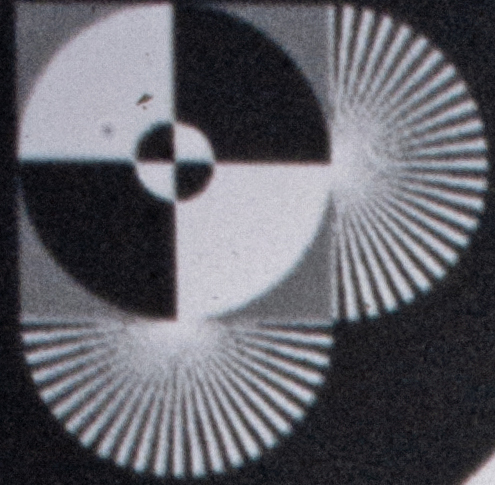
1/30 of a second,
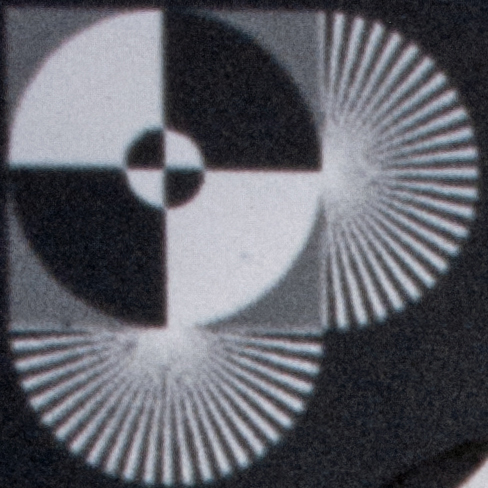
Again 1/30 of a second,
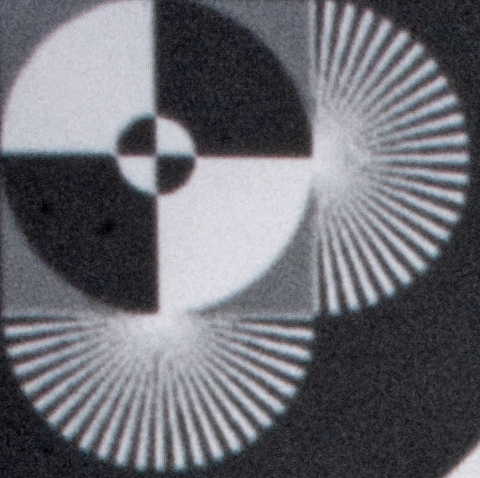
1/15 of a second,
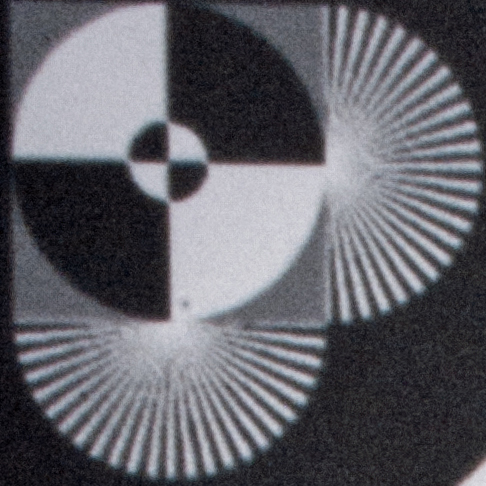
Again 1/15 of a second,
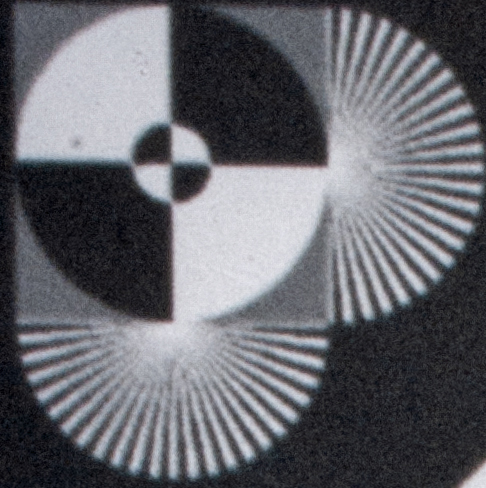
1/8 of a second,
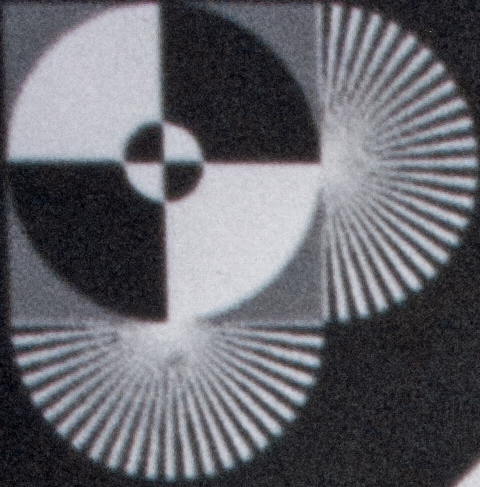
Again 1/8 of a second,
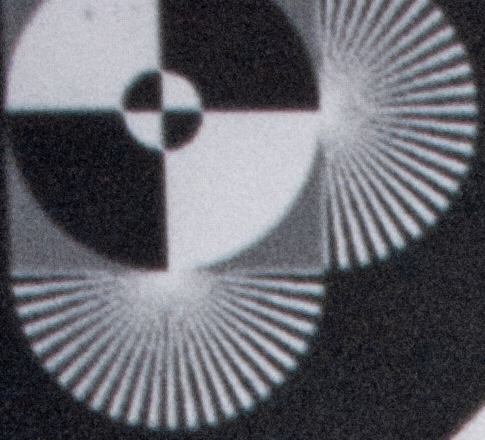
1/4 of a second,
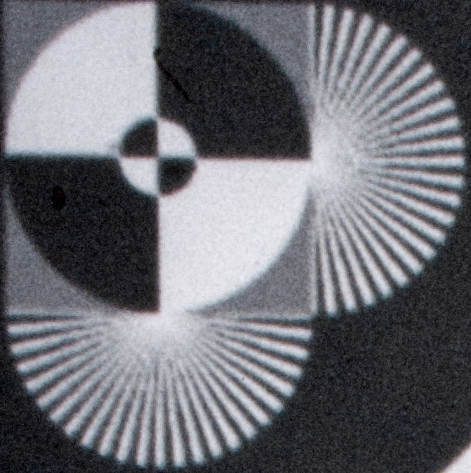
Again 1/4 of a second,
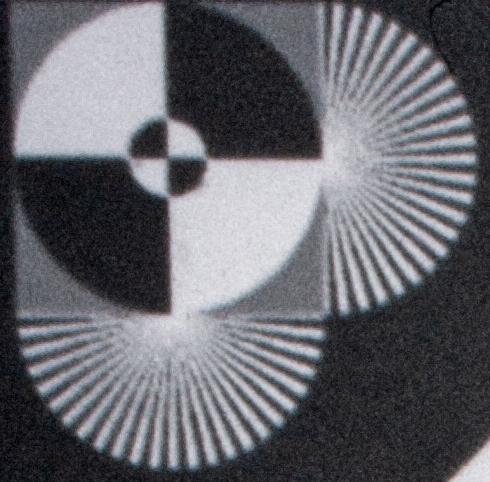
1/2 of a second,
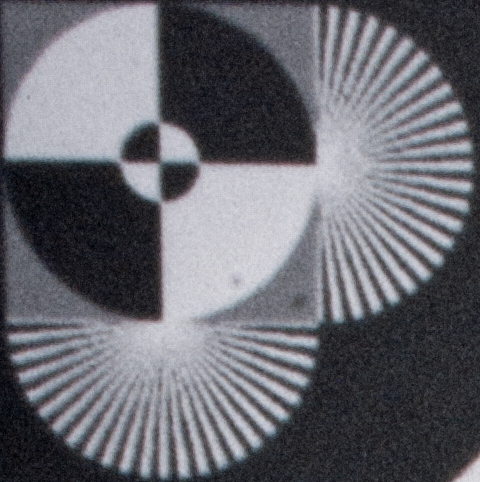
Again 1/2 of a second
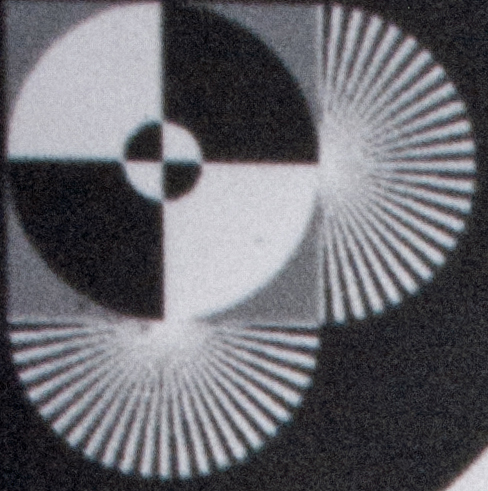
I looked very carefully at these enlargements,
but I couldn’t really identify any blur or some sort of difference between the
exposure other than the usual variations you can expect from analog material.
What do you think?
It seems to me, that under the circumstances I
take pictures and with the material I use, mirror slap is not reproduceable.
And therefore, nonexistent in this camera for me.
This is really impressive, because the D700
which has Mirror Lockup produces quite hefty mirror slap blur in the critical
exposure times without mirror lockup engaged.
Maybe if other film material and other setups
are used it may be visible, but for me it is an nonissue.
Metering:
The Matrix metering was always spot on in any
kind of situation I used it. The pictures came out right exposed roll after
roll.
The matrix metering system has less fields than
more modern systems, but nevertheless, this system seems to work flawlessly.
Center weighted and spot metering can be used too
of course.
The F90x meters with all AI and AIS lenses in center
weighted and spot metering mode but not in matrix metering mode.
The F90x meters with all lenses or optical
devices attached via adapter in center weighted and spot metering mode, no
matter if this is would be a microscope or a telescope, or something completely
else.
The Exposure meter lock on the backside is a
slider. A button like on the D700 would be preferable though.
Depth of field preview works like on mechanical
Nikon cameras. A button on the front has to be pushed against a spring. This
does not work like the more modern electronic depth of field preview of the
D700.
The Depht of field preview of the F90x will
stop down the lens on the value selected on the aperture ring. If you operate
the camera in Program or Shutter priority mode with an AF lens you will have fixed
the lens at the smallest aperture position.
That means the depth of field preview in Program
or Shutter priority mode will not show the depth of field that will be created
for the exposure but always the one for the smallest aperture.
The electronic Depht of field button on the
D700 would be preferable, because this would show the correct depth of field in
Program and shutter priority mode even if the AF lens is locked in its smallest
aperture.
But with Manual control and Aperture priority
Mode the Depth of field preview on the F90x works as expected and will be
mostly used in these modes anyway.
Lens
compatibility:
You can mount and operate almost every AI, AIs,
AF, AF-D, AF-S, AF-I and G-lens on this camera.
The G-lenses however are not fully supported.
Since the G lenses don’t have a aperture control ring, you cannot set the
aperture. That means they can be operated in Program mode and in shutter
priority mode. But Aperture priority and full manual mode won’t work on
g-lenses. VR lenses can be used, but the VR won’t operate. That means pictures
can be taken, but they won’t be stabilized.
Workaround
for g-lenses to get aperture priority mode:
But there is a way to get some kind of aperture
priority mode with G-lenses with a work around. This trick doesn’t work with
the F90 or N90 cameras unfortunatley, it only works with the F90x/N90s cameras.
I am showing in this demonstration a DX Nikkor
lens, because it is the only G lens I own. This lens would produce vignetting
on the Frame if I actually used it for taking pictures.
When it comes to G-lenses, the Motive program
modes which are usually not very much noticed become interesting. This motiv
program modes are selected by pressing the Ps button and spinning the
controlwheel.
The motive modes on this camera are:
Po for Portrait Mode
rE for red Eye reduction
HF for High Depth of field mode
LA for Landscape mode
SL for Siluette mode
Sp for Sports mode
CU for Close up mode
Of interest are the following modes:
Portrait mode Po, Close up mode CU and High
Depth of field mode HF
This three modes offer you the possibility of a
aperture priority mode and won’t change the aperture value you dialed in, no
matter of the light situation.
This three modes make virtually the same with
the sole difference, that Portrait Mode and Close up mode will start from a
somewhat large aperture and High depth of field mode will start from a rather
small aperture. When the camera goes to sleep or you turn the camera off and on
again, the camera will start from this aperture value again. It doesn’t
remember the value you had dialed in before.
The other modes will not offer an aperture
priority mode, because they will alter the aperture value dependeing on the
light situation.
While using a TTL flash the depth of field mode
will let you flash only in slow sync mode and the other two modes will prevent
you from choosing small apertures. At Portrait mode not smaller than f4 in
Close up mode not smaller than f8.
Film insert and rewind:
When I put a film in I pull the end all the way
until the red mark and i make sure that the hooks of the shaft actually engange
in the sprockets of the film, by turning the shaft gently until they lock in.
Then I close the door, turn the camera on and
press the release button. The camera advances to the first frame and is ready.
I never had a problem this way.
There are two buttons necessary for rewinding
the film, to avoid unintended rewind.
There are two sliders necessary in order to
open the backdoor which is virtually impossible to do by accident.
Energy:
The F90x camera uses 4 AA Batteries. This
batteries can be bought almost anywhere and everywhere.
Depending on the temperature, operation and
type of AA cells up to 150 rolls of 36 exposure films can be exposed with one
set of batteries
After 3 years and 40 rolls of film I am still
on my first set of batteries and the energy indicator tells me they are still
complete full and I never recharged them.
Ports:
The F90x has two ports. One is for connecting a
flash system.
The other one is a port, over which the camera
can be remote controlled. Furthermore, this port can be used to read out information
about the last Rolls of film you exposed and the camera settings can be
reprogramed. Unfortunately, special equipment is necessary to do so which is
hard to come by these days.
Additionally the F90x has an hot shoe on which
TTL flashes can be attached. The newer iTTL flashes won’t work though.
Things
I personally like:
It uses AA batteries and they last literally
forever and are easy to come by
It has a nice size, shape and weight.
It is Very well built and of a very durable and
dependable construction.
It offers a Very good matrix metering system
which is very reliable I didn’t get a single bad exposure in matrix metering
mode.
It is Very cheap on the used market
It can be remote controlled
It offers Excellent ttl flash metering
It has a no nonsense design with a Straight
forward and easy operation which gets out of your way at making pictures.
Things
I personally don’t like:
No full manual mode with g-lenses, no true Aperture
priority mode with g-lenses, only via workaround
Exposure meter lock is a slider and not the
preferable button.
No af button on the back.
Overall
impressions, suggestions:
This camera could be of interest for you If you
want an inexpensive backupcamera.
If you don’t have a lot of g-lenses or don’t
mind using manual mode with them.
if you want a good but cheap camera that will
produce reliable results so you don’t waste film.
If you want a dependable workhorse, that is not
heavy or large at all
You can get one of these cameras right now for
the cost of two rolls of film with development.
If you don’t own g-lenses this camera is
probably the best deal in analog Nikon Photography for you.
It is a capable and dependable camera. And I
think it is really a joy to use.
I hope this content is of use for you.
-------------------------------------------------------------------------------------------------------------------------------------
Technical Specifications:
Key Features
Cross-type
wide-area AF system
Choice of
Wide-Area AF and Spot AF
High-speed
Focus Tracking up to 4.1 frames per second (fps) with Lock-On™
3D Matrix
Metering (with D-/G-type Nikkor lens)
Center-Weighted
Metering and Spot Metering
3D
Multi-Sensor Balanced Fill-Flash capability (with SB-800 / 80DX / 28DX / 28 /
27)
Seven
Vari-Programs
Four exposure
modes ([P] / [S] / [A] / [M])
Comprehensive
system compatibility: two Finder Screens and two Camera Backs (Multi-Control
Back MF-26 and Data Back MF-25), and the whole range of Nikon SB series
Speedlights and Nikkor lenses
|
Exposure control |
Vari-Program
System, Programmed Auto (Auto-Multi) [P] with Flexible Program,
Shutter-Priority Auto [S], Aperture-Priority Auto [A] and Manual [M] |
|
Shutter speed |
1/8,000 to 30
seconds; stepless on [P] or [A]; in 1/3 EV steps on [S] or [M]; B |
|
Exposure metering |
Matrix,
Center-Weighted and Spot; EV -1 to +21 at ISO 100 with f/1.4 lens (EV 3 to 21
with Spot Metering) |
|
Dimensions (W x H x D) |
Approx. 154 x 106 x 69mm (6.1 x 4.2 x 2.7 in.) |
|
Weight (body
only without batteries) |
Approx. 755g (26.6 oz.) |
This information comes directly from Nikon:
https://imaging.nikon.com/lineup/filmcamera/slr/f90x/
comments